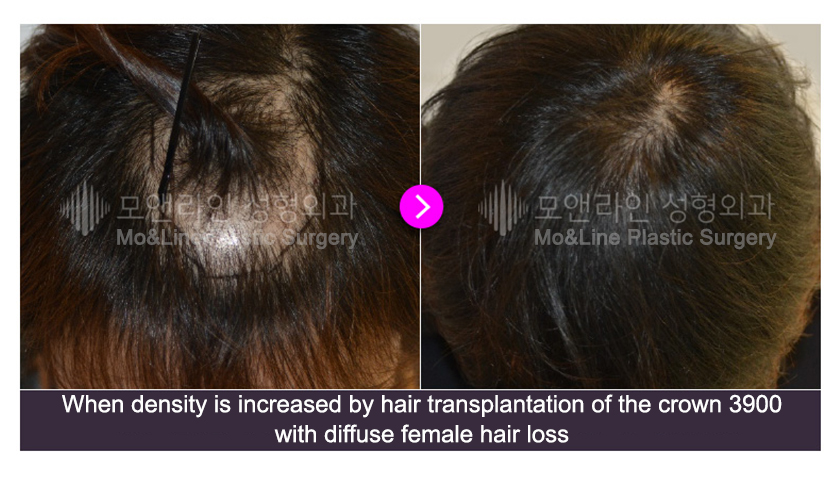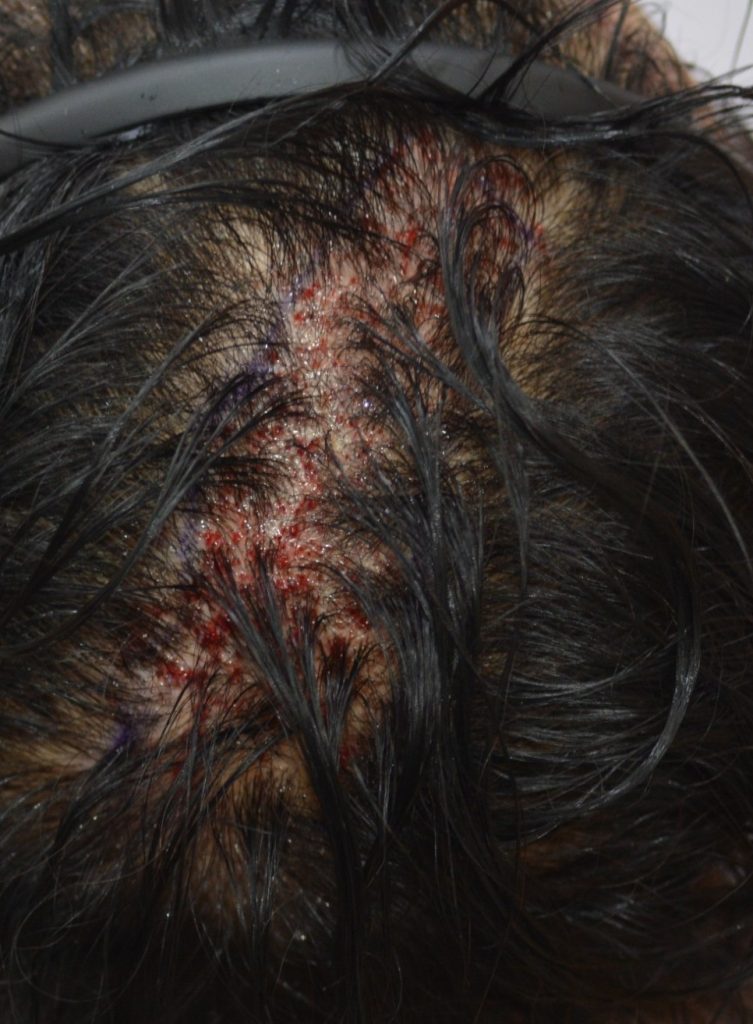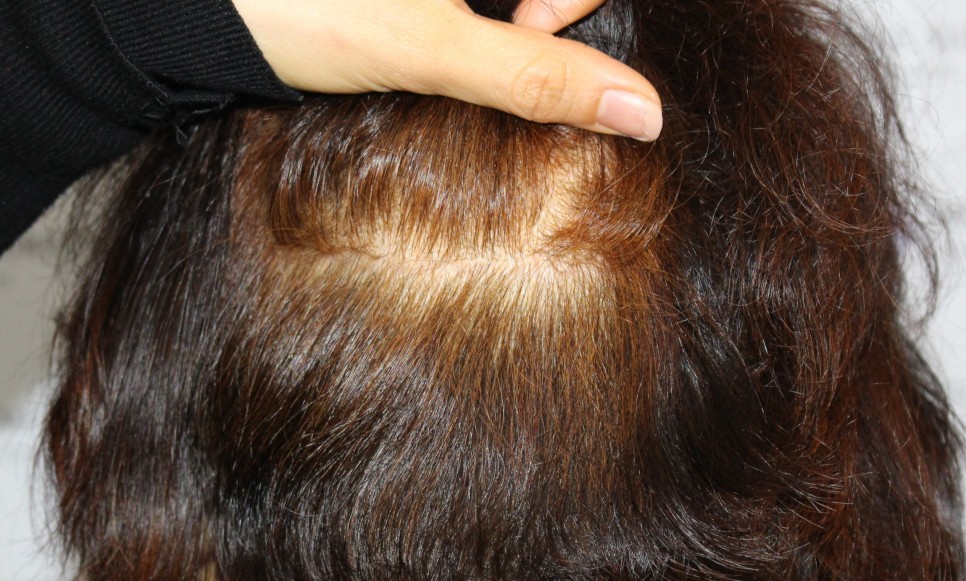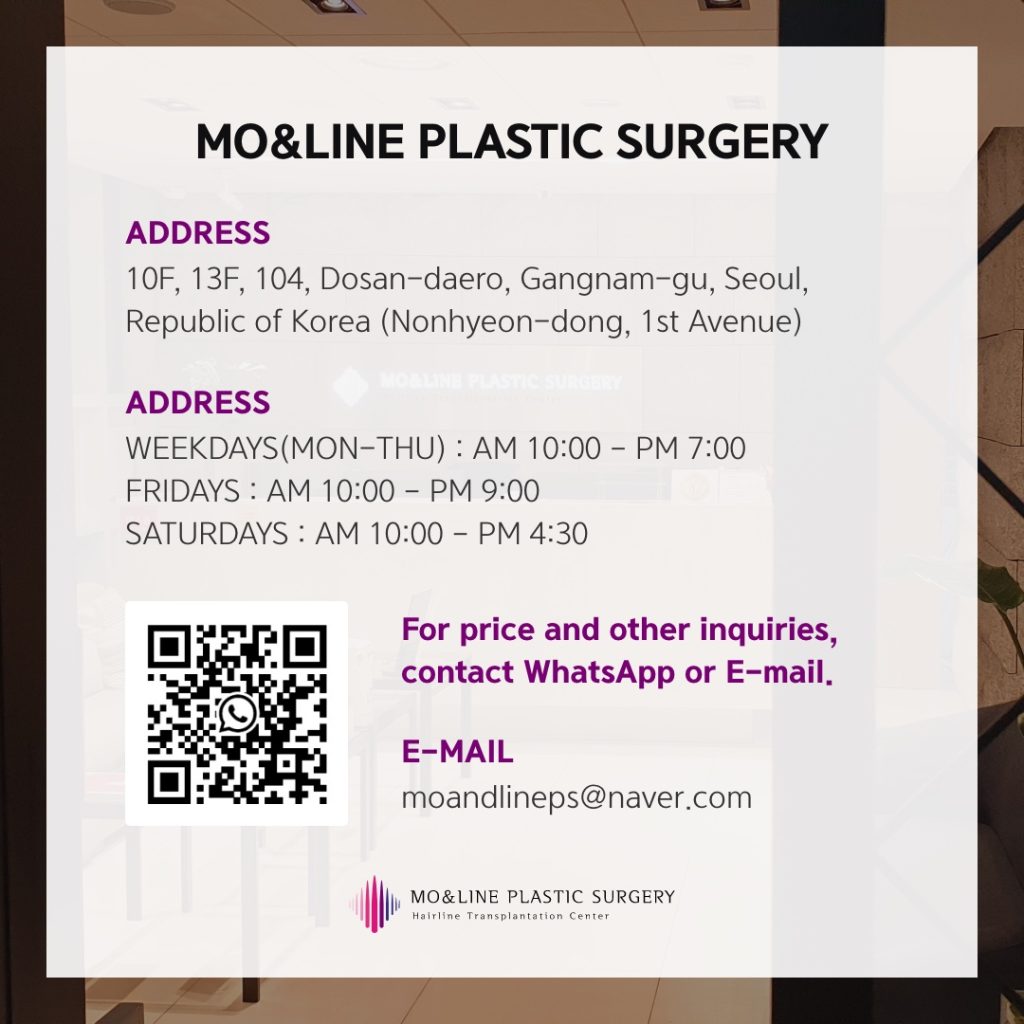
Many women experience hair loss concentrated around the crown, whorl, and part areas, making these parts appear sparse. In such cases, some consider wearing wigs. However, wigs often look unnatural compared to real hair and can be cumbersome during activities like sauna visits, exercise, or swimming.
Broccoli perms can’t adequately cover a sparse scalp, and semi-permanent tattoos fade over time, looking unnatural and potentially damaging surrounding hair follicles due to irritation. Hair loss medications alone are insufficient to restore hair density and may pose safety concerns, making them unreliable for women.


A hair transplant, using your own hair, is the best way to naturally cover sparse areas at any time or place. However, high-density hair transplant expertise is crucial. Basic hair transplant techniques might not provide enough volume and can even cause existing hair to fall out due to lack of expertise. The procedure must consider the direction of existing hair and adjust the angle and density of the slits to add volume, focusing on transplanting thicker hair.
Hair transplantation involves selectively harvesting hair follicles from the back of the head and transplanting them to balding areas. The transplanted hair, once it has successfully settled and grown, can maintain its volume for a long time with proper care as advised by Mo & Line Plastic Surgery Clinic.


Following this, the appropriate thick hair follicles are quickly selected and extracted from the back of the head to enhance the density in the crown and part areas. When extracting follicles from the back of the head, a combination of FUSS(FUT) and FUE methods is used, especially for those with lower hair density due to aging.
If FUE follicle extraction is used, hair won’t grow back in the extraction area, reducing density. Therefore, a combination of FUSS(FUT) and FUE methods is employed.

Even with FUSS(FUT)-based follicle extraction, micro-stitching with dissolvable sutures ensures minimal scarring, eliminating the need for stitch removal visits and reducing scar visibility. It’s crucial to verify that the surgeon is a certified plastic surgery specialist with extensive experience in both FUSS(FUT) and FUE hair transplant surgeries before making a decision.
Don’t stress over thinning hair, a sparse crown, and part areas, or an unattractive hair split at the whorl. Consult with a specialist to explore solutions. Hairline correction can also improve M-shaped or wide, high foreheads.


For price and other inquiries, contact ✉️E-mail or 📞 WhatsApp
💬moandlineps@naver.com
📞WhatsApp: +82 10 7327 4890
Instagram ⤵️
https://www.instagram.com/moandlineps.eng/
Homepage (English) ⤵️
http://moandlineps.com/foreign/en/
🩺 OPEN HOURS
WEEKDAYS(MON-THU) : AM 10:00 – PM 7:00
FRIDAYS : AM 10:00 – PM 9:00
SATURDAYS : AM 10:00 – PM 4:30
📍10F, 13F, 104, Dosan-daero, Gangnam-gu, Seoul,
Republic of Korea (Nonhyeon-dong, 1st Avenue)
